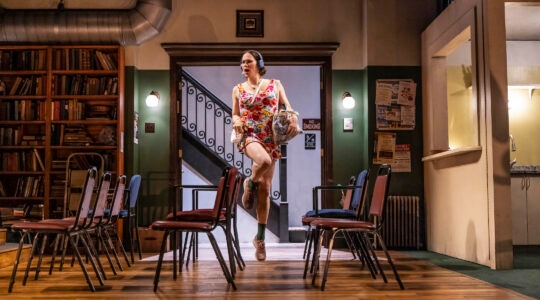In the new French movie “Bicycling with Molière” — terrific fun, by the way — the actors Fabrice Lucchini and Lambert Wilson bicycle around a picturesque French island while trading barbs and lines from Molière’s play “The Misanthrope.”
The island, Île de Ré, may be unknown to most Americans. But this 18-mile spit of land north of Bordeaux and south of Brittany is a classic summer resort — the Martha’s Vineyard of France, you might say.
Île de Ré has a surprising lot in common with the Vineyard. Both islands share a north Atlantic maritime climate, milder than their respective mainlands; and their residents boast of microclimates that allow grapevines and even (on Île de Ré) palm trees to flourish.
The landscapes, too, are eerily similar. Low-lying and tranquil, both islands feature salt marshes that glow a brilliant green in the late-afternoon sunshine; clear turquoise waters with long sandy beaches; quaint fishing villages; and the kind of wide-open stretches of sea and sky that make painters set up easels.
Like villages-turned-resorts everywhere, the Île de Ré and the Vineyard also host a mix of old farming and fishing families, more recent retirees and an annual influx of moneyed vacationers and artsy types — like Wilson’s character, a hot-shot soap actor — who clog up the summertime roads. Tourists head to both islands for the same gentle, time-honored lures: licking an ice-cream cone while strolling along the harbor, splashing about on uncrowded beaches, and eating fresh fish washed down with local wine in one of the well-preserved villages.
Unlike the Vineyard, however, Île de Ré built a bridge back in the ’80s, making it relatively easy to visit — if you happen to be in northern France. (A high-speed train, or TGV, whisks you in just a few hours from Paris to the port of La Rochelle, on the mainland directly opposite the island.)
Lucchini and Wilson bike around the island in the cold, damp off-season; since the island rarely freezes in wintertime, locals have long favored the bicycle over other forms of transport, and it boasted a network of bike paths long before they were trendy elsewhere. In fact, a bike is the only sensible set of wheels upon which to navigate the narrow, winding alleys of Saint Martin, the island’s main town.
More than a few Parisian Jews call Île de Ré home in summer, but the mainland’s La Rochelle nearby has the more established Jewish history — and its medieval harbor is worth a day’s touring before you move offshore. The provincial capital, La Rochelle rose to prominence about 800 years ago, which is when a Sephardic Jewish population established a community known for its scholarly bent. As in much of Europe, the Jews there suffered a turbulent history and periodic expulsions.
La Rochelle is home to a modern-day congregation that offers regular services and communal activities, as well as a historic Jewish cemetery. Meanwhile, on the Île de Ré, the main claim to Jewish fame is the memory of Alfred Dreyfus, who was briefly imprisoned in its citadel of Saint-Martin de Ré on his way to a prison sentence in French Guyana.
That citadel, and the old walled city within it, are today a UNESCO World Heritage site. Saint-Martin, the fortress, and the surrounding beaches where German soldiers built bunkers during World War II are all considerably less important to world events than they once were. But if the remains of those bunkers are less-than-exciting, the 17th-century churches and villas within Saint Martin hardly fail to enchant.
As on the Côte d’Azur, one of the chief pleasures of the Île de Ré is the café scene along seaside terraces. In Saint-Martin and La Flotte — a smaller village that is consistently named one of France’s loveliest — families settle into tables around lunchtime, lingering over crepes, grilled fish and wine with a view over the sailboats. (Speaking of that wine: there are several vineyards sprinkled around the island, and local whites are considered quite good.) In Saint-Martin especially, there is the usual profusion of clothing boutiques and art galleries, though gentrification is more low-key here than on the flashier Mediterranean.
But this isn’t an island where you plunk down in one town, shuttling back and forth to the beach. The string of jewel-like villages was once a series of separate landmasses; each has its own architectural gems and its own specialties to offer to the weekend market.
To take it all in, do as Lucchini and Wilson did and hop on a bicycle, and peddle alongside potato fields, heron nests and crumbling abbeys. Quoting Molière is optional.
The New York Jewish Week brings you the stories behind the headlines, keeping you connected to Jewish life in New York. Help sustain the reporting you trust by donating today.




